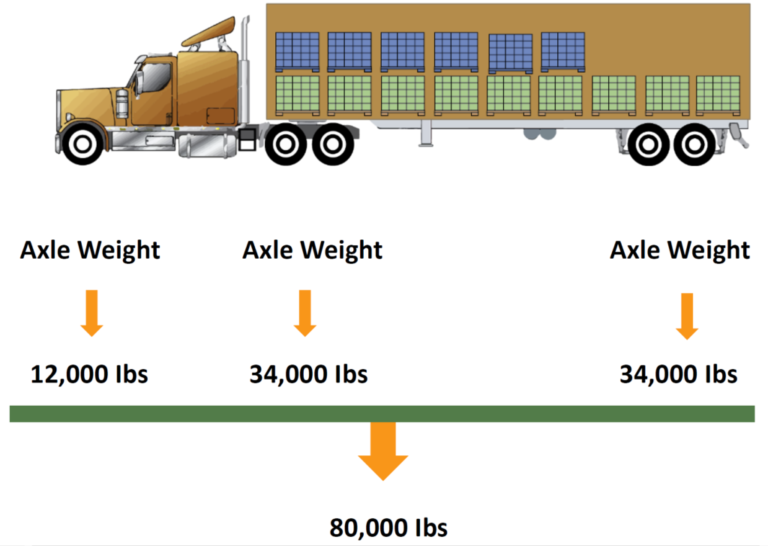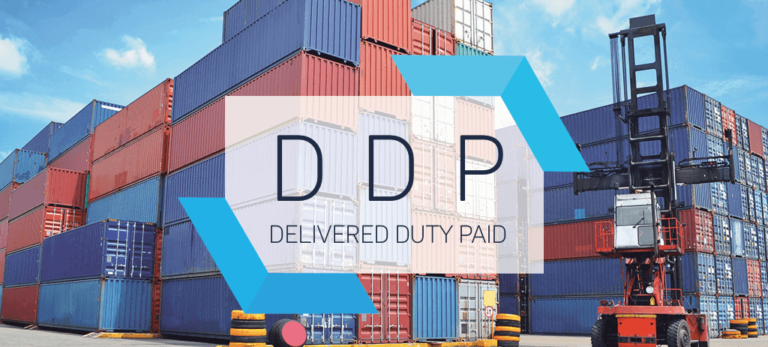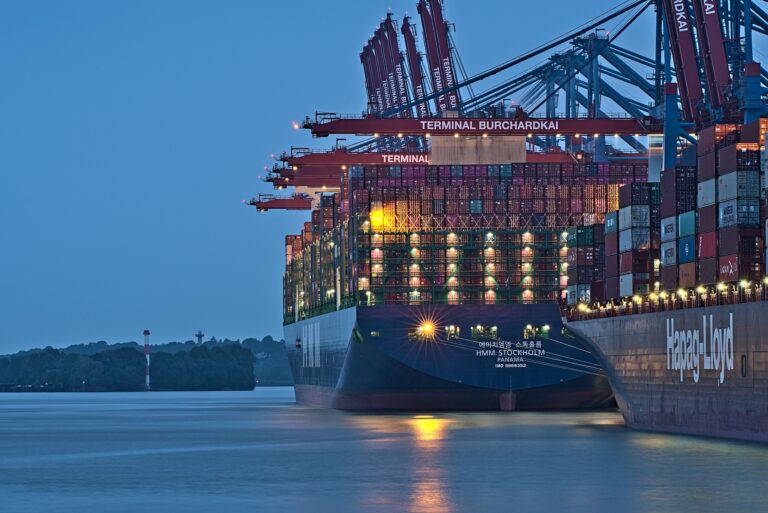TOP-11 LARGEST PORTS IN NORTH AMERICA

For thousands of years, shipping has been the most effective method to move large amounts of cargo globally. Around 90% of world trade is carried out by the ocean. Massive ships enable thousands of containers to be transported through various ports in the United States.
North America is a key player in the global economy, and its ports are essential in connecting the continent to the rest of the world. With the rise of globalization and international trade, ports have become vital gateways for businesses to access markets and transport goods. In this article, we will explore the largest ports in North America.
| Ports | Annual container volume (TEUs) |
|---|---|
| Los Angeles Port | 9.3 million |
| Long Beach Port | 8.1 million |
| New York & New Jersey Port | 4.2 million |
| Port of Houston | 1.6 million |
| Oakland Port | 2.5 million |
| South Carolina (Port Charleston) | 1.29 million |
| Virginia (Norfolk Port) | 3.7 million |
| Maryland (Baltimore Port) | 1 million |
| Seattle-Tacoma Port | 3.7 million |
| Georgia Ports (Savannah and Brunswick) | 4.35 million |
| Port of Vancouver | 3.4 million |
- Los Angeles Port
- Long Beach Port
- New York & New Jersey Port
- Port of Houston
- Oakland Port
- South Carolina (Port Charleston)
- Virginia (Norfolk Port)
- Maryland (Baltimore Port)
- Seattle-Tacoma Port
- Georgia Ports (Savannah and Brunswick)
- Port of Vancouver
- FAQ
Los Angeles Port

The Port of Los Angeles, located in San Pedro Bay, California, is the largest in North America and one of the world’s busiest ports, handling over 9 million TEUs (twenty-foot equivalent units) of goods each year. It is a major gateway for international trade, connecting businesses in the United States to markets and customers around the globe.
The Port of Los Angeles is a complex of several terminals and facilities that handle various goods, including containerized cargo, automobiles, petroleum, chemicals, and raw materials.
One of the reasons for the port’s success is its strategic location on the West coast of the United States, with easy access to the Pacific Rim and Asia. An extensive transportation infrastructure network, including highways, railroads, and pipelines, also serves the port. The port is a key economic driver for the region, supporting over 1 million jobs and generating billions of dollars in economic activity each year.
Long Beach Port

The Port of Long Beach in Southern California is the second-busiest port in North America and a key gateway for international trade.
The Port of Long Beach is a major hub for containerized cargo, handling over 8 million TEUs of goods each year. The port is home to several large terminals and facilities, including the Long Beach Container Terminal, the Middle Harbor Terminal, and the Pier T Container Terminal. These facilities handle various goods, including electronics, apparel, furniture, and machinery.
One of the reasons for the port’s success is its strategic location on the West coast of the United States, with easy access to the Pacific Rim and Asia. The port’s proximity to major population centers in Southern California also makes it a key gateway for consumer goods.
New York & New Jersey Port

The Port of New York and New Jersey is the third-largest port in North America, located in the busy metropolitan area of New York City and Northern New Jersey.
The Port of New York and New Jersey is a major hub for containerized cargo, handling over 7 million TEUs of goods each year. The port has several large terminals and facilities, including the APM Terminals, Global Container Terminals, and Maher Terminals. These facilities handle various goods, including automobiles, consumer goods, and raw materials.
One of the reasons for the port’s success is its strategic location near the population centers of the northeastern United States, with easy access to major highways, railroads, and airports. The port is also served by an extensive network of shipping lanes, making it a key gateway for international trade with Europe, Asia, and Latin America.
Port of Houston

The Port of Houston is one of North America’s largest and busiest ports in Houston, Texas.
The Port of Houston is a major hub for containerized cargo, handling over 3 million TEUs of goods each year. The port is home to several large terminals and facilities, including the Bayport Container Terminal, the Barbours Cut Container Terminal, and the Turning Basin Terminal. These facilities handle many goods, including petrochemicals, steel, machinery, and consumer goods.
One of the reasons for the port’s success is its strategic location near the Gulf of Mexico and the petrochemical complex of the Texas Gulf Coast. The port’s proximity to major population centers in Texas and the southern United States also makes it a key gateway for consumer goods.
Oakland Port

The Port of Oakland is a major seaport in California’s San Francisco Bay area. It is the fifth busiest port in North America, with over 2.5 million TEUs of cargo passing through its terminals each year.
The Port of Oakland has a diverse mix of terminals and facilities, including the Oakland International Container Terminal, the TraPac Container Terminal, and the Oakland Bulk and Oversized Terminal. The port is also a major gateway for trade with Asia, with several shipping lines connecting Oakland to ports in China, Japan, and South Korea.
The port’s proximity to Silicon Valley and other technology hubs has become a key gateway for technology products and components.
South Carolina (Port Charleston)

The Port of Charleston, located in South Carolina, is one of the busiest and most important ports in the southeastern United States. The port handles over 2 million TEUs of cargo each year, making it the third largest container port on the East Coast of North America.
The Port of Charleston has a diverse mix of terminals and facilities, including the Wando Welch Terminal, the North Charleston Terminal, and the Hugh K. Leatherman Terminal. The port is also a major gateway for trade with Europe, with several shipping lines connecting Charleston to ports in the United Kingdom, Germany, and the Netherlands.
The port’s proximity to major manufacturing and distribution centers in the southeastern United States has also made it a key gateway for goods coming in and out of the region.
Virginia (Norfolk Port)

The Port of Virginia, also known as the Norfolk Port, is a major seaport in the southeastern United States. It is the third largest port on the East Coast of North America and the seventh largest in the country, handling over 2.8 million TEUs of cargo each year.
The Port of Virginia has various terminals and facilities, including the Norfolk International Terminals, the Virginia International Gateway, and the Portsmouth Marine Terminal. The port is also a major gateway for trade with Europe, Asia, and the Middle East, with several shipping lines connecting Norfolk to ports worldwide.
The port’s proximity to the Hampton Roads area, which includes Norfolk, Virginia Beach, and Newport News, has also made it a key gateway for goods coming in and out of the region.
Maryland (Baltimore Port)

The Port of Baltimore, located in Maryland, is a major seaport on the United States East Coast. It is the 14th largest port in the United States and the largest port in Maryland. The port handles over 10 million tons of cargo annually, including automobiles, containerized cargo, and bulk cargo like coal and petroleum products.
The Port of Baltimore has various terminals and facilities, including the Seagirt Marine Terminal, the Dundalk Marine Terminal, and the Fairfield Auto Terminal. These facilities handle many goods, including steel, paper, and refrigerated goods. The port is also a major gateway for trade with Europe, Asia, and South America, with several shipping lines connecting Baltimore to ports worldwide.
The port’s proximity to major manufacturing and distribution centers in the mid-Atlantic region has also made it a key gateway for goods coming in and out of the area.
Seattle-Tacoma Port

The Port of Seattle and the Port of Tacoma, both located in the state of Washington, jointly operate the Seattle-Tacoma Port, also known as the Sea-Tac Port. North America’s fourth-largest container port handles over 4 million TEUs of cargo annually. The port is strategically located on the West Coast of the United States, serving as a gateway to Asia, Europe, and other regions of the world.
The Seattle-Tacoma Port has a diverse mix of terminals and facilities, including the Port of Seattle’s Terminal 18 and Terminal 5 and the Port of Tacoma’s Pierce County Terminal and Husky Terminal. These facilities handle many goods, including containerized cargo, automobiles, and agricultural products. The port is also a major gateway for trade with China, Japan, and other countries in Asia, with several shipping lines connecting Seattle-Tacoma to ports worldwide.
The port’s proximity to the Puget Sound region, which includes Seattle, Tacoma, and other cities, has also made it a key gateway for goods coming in and out of the area.
Georgia Ports (Savannah and Brunswick)

The Georgia Ports Authority operates two major seaports in Georgia – the Port of Savannah and the Port of Brunswick. Together, they handle over 5 million TEUs of cargo each year, making the Georgia Ports one of the busiest container port complexes in the United States.
The Port of Savannah is North America’s largest single container terminal and is a major gateway for trade between Asia, Europe, and the eastern United States. The port has 10 deepwater berths, state-of-the-art cranes, and other cargo-handling equipment. The port’s terminals also handle goods, including automobiles, forests, and agricultural products.
The Port of Brunswick, located about 70 miles south of Savannah, is one of the busiest auto and machinery ports in the United States. It has three deepwater terminals and handles a variety of roll-on/roll-off (RoRo) cargo, including automobiles, heavy equipment, and other vehicles.
The ports’ proximity to major manufacturing and distribution centers in the southeastern region has also made them a key gateway for goods coming in and out of the region.
Port of Vancouver

The Port of Vancouver, located in British Columbia, Canada, is one of North America’s largest and busiest ports. It is the gateway to the Asia-Pacific region for Canada and the United States, handling over 145 million metric tons of cargo annually, including containers, bulk cargo, and automobiles.
The port’s strategic location on the West Coast of North America provides easy access to major population centers and transportation networks throughout the region. It also offers direct access to major international shipping lanes, making it an essential gateway for trade between North America and Asia.
The Port of Vancouver has several container terminals, including the Deltaport and Vanterm facilities. These terminals handle containerized cargo worldwide, equipped with state-of-the-art cranes and other cargo-handling equipment. In addition to containerized cargo, the port handles bulk cargo, including grain, coal, and petroleum products.
The port has also become a major hub for exporting Canadian resources, such as lumber and minerals, to Asia. The port’s bulk terminals and specialized equipment allow it to handle a wide range of cargo, including forest products, agricultural products, and minerals.
Marine transport has seen tremendous growth recently with improved international trade relations, an extension of established trade routes, and the construction of larger ships. The number of ports along the US coastline has increased significantly, and they now make it easier to receive and export a wide variety of goods.
With the increase in imports and exports and the participation in international trade, US ports became some of the busiest ports in the world. But you can choose the most reliable way to transport your goods with PartnerTrade – we help you with international logistics.
What’s the busiest port in North America?
FAQ
The Port of Los Angeles in Southern California is the most active in North America. It is consistently ranked as the busiest container port in the United States and the Western Hemisphere.
What are the 5 largest ports in North America?
Based on total cargo volume, the 5 largest ports in North America are:
– Port of Los Angeles – California, USA
– Port of Long Beach – California, USA
– Port of New York and New Jersey – New York/New Jersey, USA
– Port of Savannah – Georgia, USA
– Port of Houston – Texas, USA
These ports handle millions of TEUs of cargo annually and serve as critical gateways for trade between North America and the rest of the world.
What is the second largest port in North America?
The Port of Long Beach is the second largest port in North America, located in Southern California, USA. It is consistently ranked as one of the busiest container ports in the world, after its neighbor, the Port of Los Angeles.





